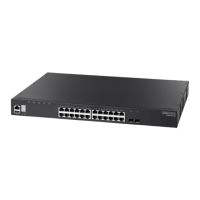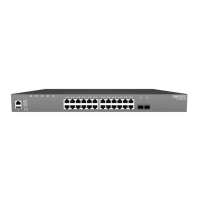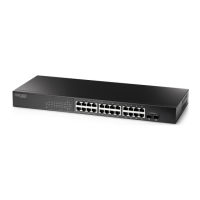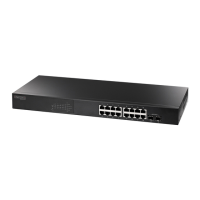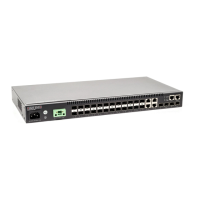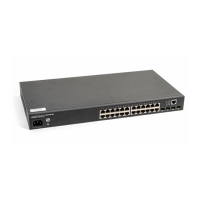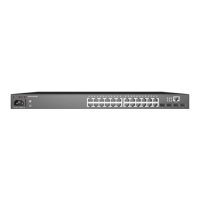Chapter 14
| Port Mirroring Commands
Local Port Mirroring Commands
– 474 –
both - Mirror both received and transmitted packets.
vlan-id - VLAN ID (Range: 1-4094)
mac-address - MAC address in the form of xx-xx-xx-xx-xx-xx or
xxxxxxxxxxxx.
acl-name – Name of the ACL. (Maximum length: 32 characters, no spaces or
other special characters)
Default Setting
◆ No mirror session is defined.
◆ When enabled for an interface, default mirroring is for both received and
transmitted packets.
◆ When enabled for a VLAN or a MAC address, mirroring is restricted to received
packets.
Command Mode
Interface Configuration (Ethernet, destination port)
Command Usage
◆ You can mirror traffic from any source port to a destination port for real-time
analysis. You can then attach a logic analyzer or RMON probe to the destination
port and study the traffic crossing the source port in a completely unobtrusive
manner.
◆ Set the destination port by specifying an Ethernet interface with the interface
configuration command, and then use the port monitor command to specify
the source of the traffic to mirror. Note that the destination port cannot be a
trunk or trunk member port.
◆ When mirroring traffic from a port, the mirror port and monitor port speeds
should match, otherwise traffic may be dropped from the monitor port. When
mirroring traffic from a VLAN, traffic may also be dropped under heavy loads.
◆ When VLAN mirroring and port mirroring are both enabled, the target port can
receive a mirrored packet twice; once from the source mirror port and again
from the source mirror VLAN.
◆ When mirroring traffic from a MAC address, ingress traffic with the specified
source address entering any port in the switch, other than the target port, will
be mirrored to the destination port.
◆ Spanning Tree BPDU packets are not mirrored to the target port.
◆ When mirroring VLAN traffic or packets based on a source MAC address, the
target port cannot be set to the same target port as that used for basic port
mirroring.
